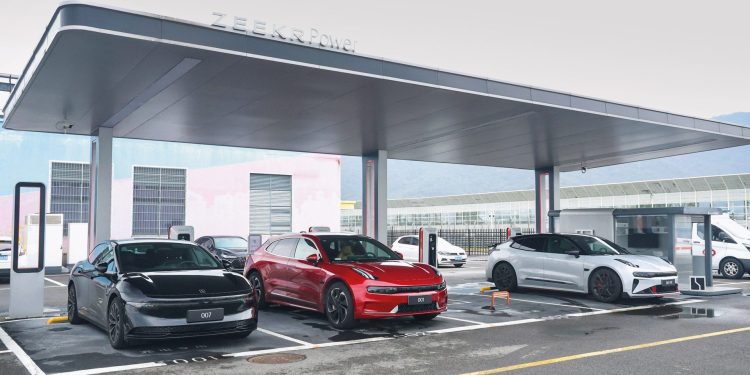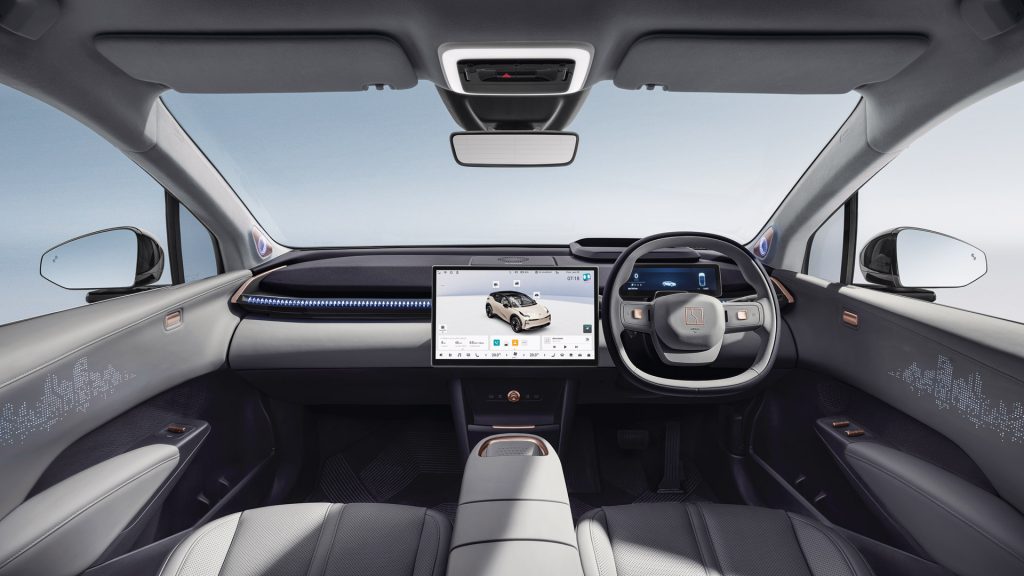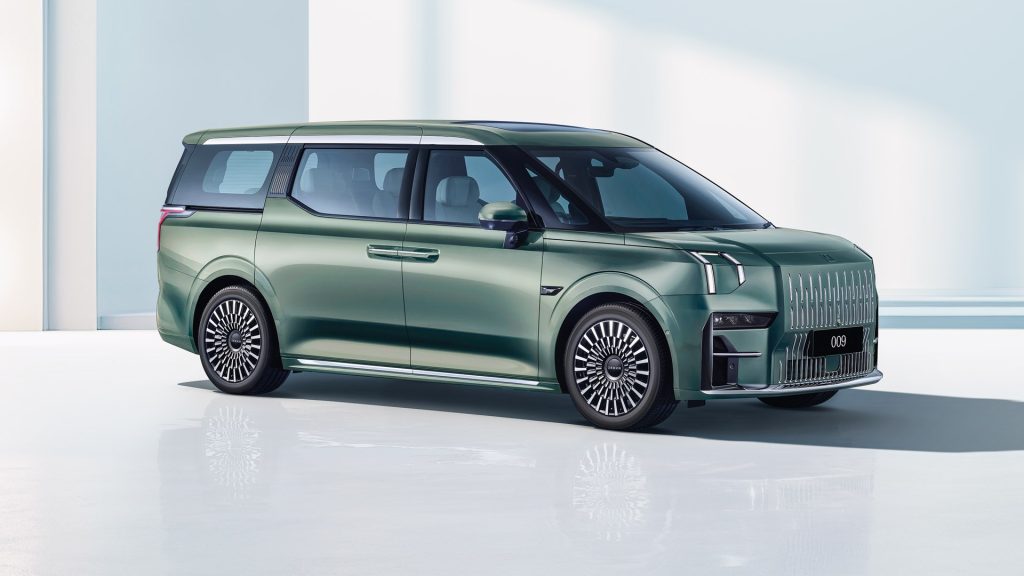Zeekr factory visit
Words: Richard Edwards | Photos: Zeekr, Richard Edwards
Zeekr is about to touch down in New Zealand. Richard Edwards heads to China to see if Zeekr has the cars, the tech, and the attitude to back up its premium ambitions.
At four years old, China’s Zeekr has done something pretty darn impressive. It has gone from brand launch to a quarter of a million vehicles sold, with an established range of very upmarket models and surprising brand equity.
How? Well, it didn’t quite start from scratch. Part of the massive Geely group, its roots go back to 2013, when Geely was getting Volvo back on its feet. It invested heavily in what was then called China Euro Vehicle Technology AB, a 100,000-square-metre facility tasked with developing a new platform for Volvo as well as for Geely’s Lynk & Co brand. You already know the work of this facility. It is the homeroom of the ‘CMA’ platform that underpins the Polestar 2 and Volvo XC40. It then developed the ‘SEA’ platform on which the Polestar 3 and 4, the Lotus Eletre and a range of Geely and Lynk & Co models are based.
The first SEA car was intended to be a Lynk & Co, but Geely instead chose to launch it under the new Zeekr brand. Zeekr found favour quickly, gaining three development centres in China, taking over much of Geely’s interest in Lynk & Co as well as CEVT, now called Zeckr Technology Europe.
So it is a big deal despite its newness and if you want to look at the future of Volvo, Polestar and other Geely-linked brands, Zeekr is a good place to start.
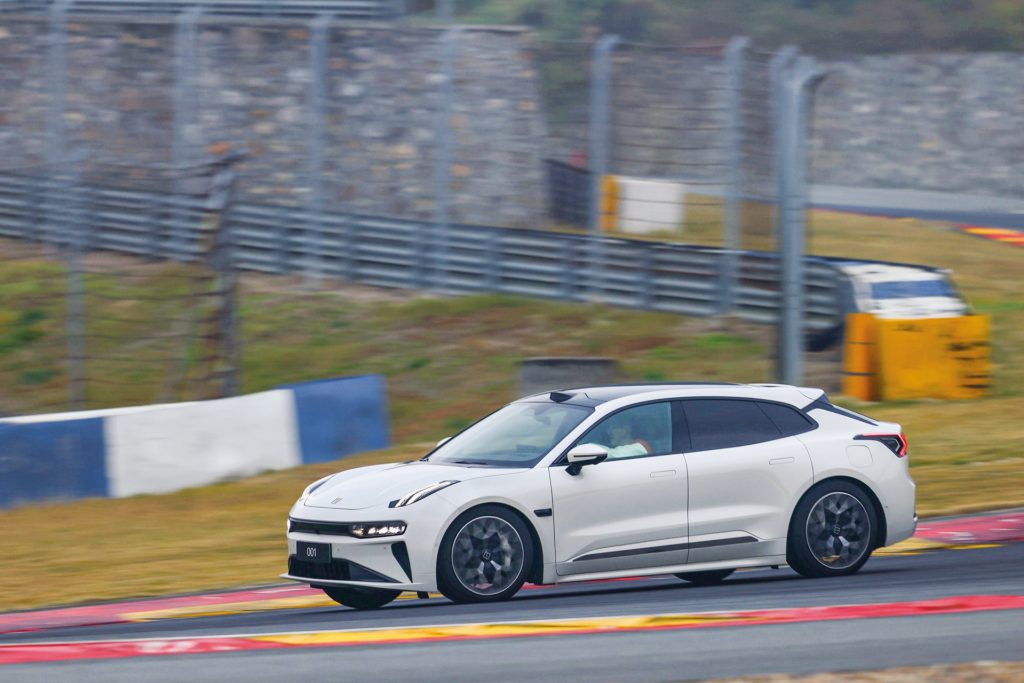
What’s with the name?
Zeekr hints at its mission in its name, a blend of Generation Z and ‘Geek’, a word arguably used as either a pejorative or an affectionate term for those passionate about technology. It wants to be a tech leader, particularly in electric vehicles, but do so with a sports-and-lifestyle bent. This is also indicated in the way they often market themselves under the ‘Zeekr Life’ banner.
They are gunning for Tesla, Nio, and other electric vehicle makers. Calling it a Tesla competitor might be underselling it; my pick is that they see themselves as more of a BMW or Mercedes rival. The cars are better specified than equivalent Teslas as well, though this could mean they attract higher prices.
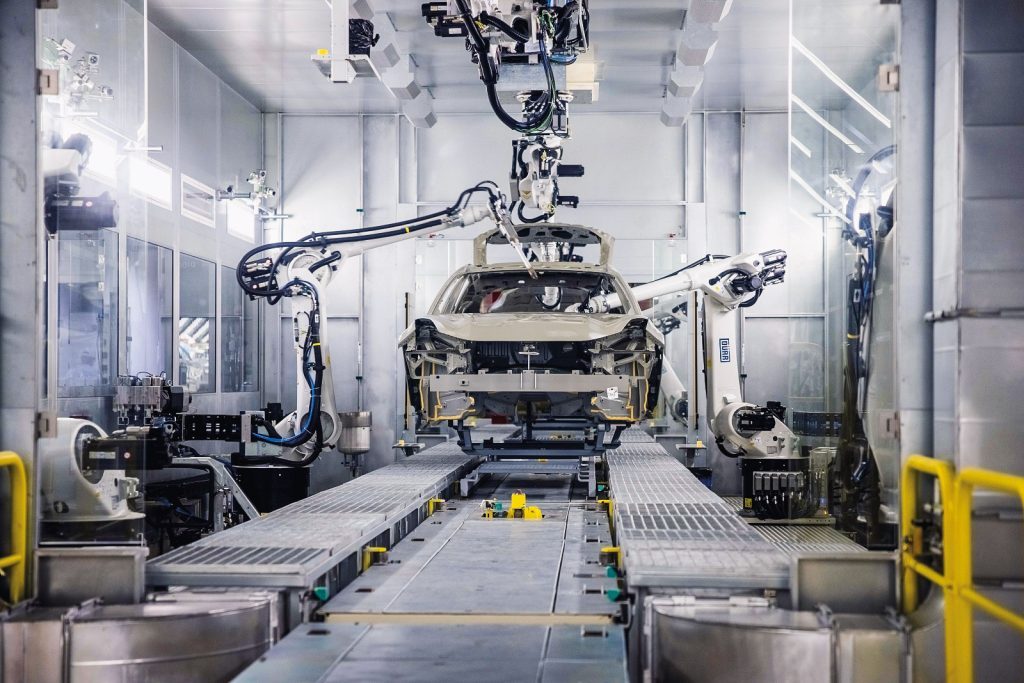
What they do share with Tesla, at least in China and Australia, is an inclination towards direct sales and online ordering, backing up their retail storefronts. For New Zealand, it is less clear, as while the brand has indicated arrival is imminent, it has yet to confirm a local distribution partner.
On the ‘Geek’ side, they have some serious cred as well. The brand has developed a driverless vehicle for Waymo to apply its own self-driving technology. It has also partnered with Mobileye to develop autonomous driving systems aiming to deliver the world’s first level-four-capable car. That’s the final step before a fully driverless car. Tech giants are among its investors, too. Listed on the New York Stock Exchange, Intel, battery-maker CATL, and Bilibili (China’s YouTube equivalent) all have a stake.
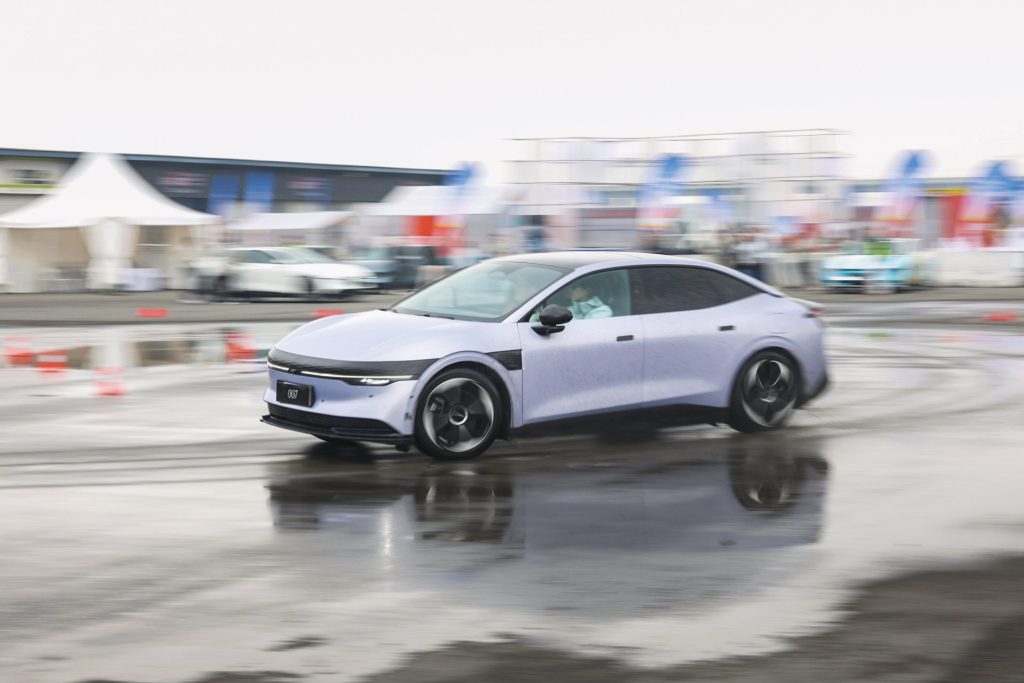
So you went Ningbo?
While technically headquartered in the impressive Zeekr Tower in Geely’s home city of Hangzhou, much of the brand’s footprint is in the nearby city of Ningbo.
Just across Hangzhou Bay from Shanghai, Ningbo is modest by Chinese city standards, at around 10 million residents.
We visited the brand’s massive production facility, where staff live as well as work. The research and development centre is located nearby, along with a campus for suppliers. The factory itself is capable of producing
with a giga-press-like unit used to produce large underbody sections.
More importantly for us in Ningbo is the Ningbo International Circuit. Owned by Geely, this impressive four-kilometre long circuit is rated at FIA Grade Two and used for a range of motorsport activities as well as testing for Geely’s brands.
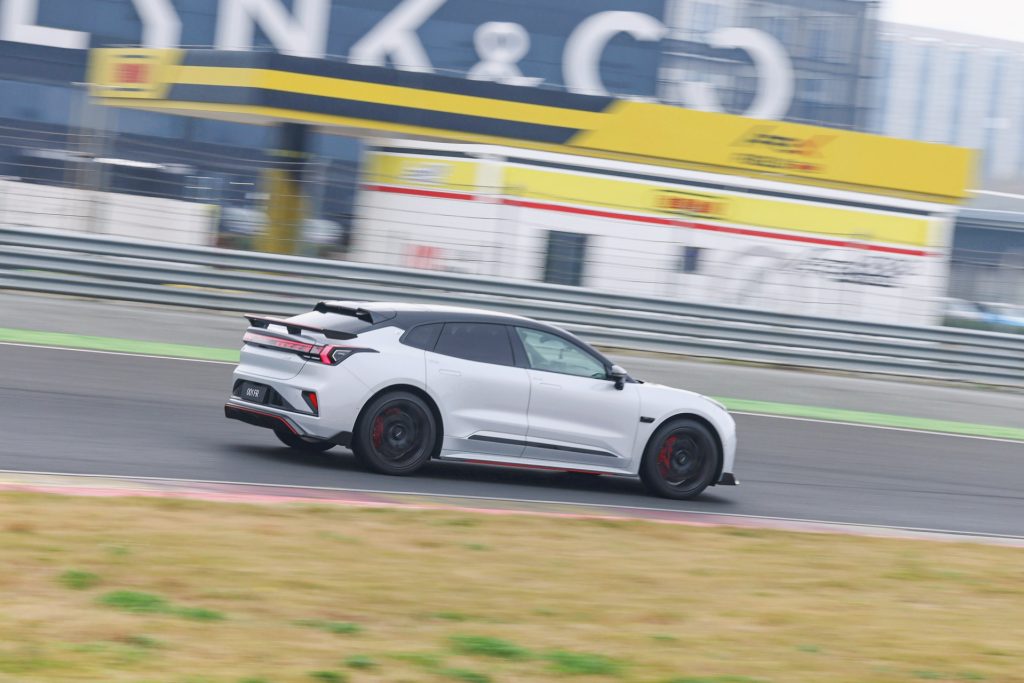
Previous trips to China have usually been restricted to short drives around car parks while watchers nervously look on. Zeekr seems a lot more confident, letting us out for some seriously energetic laps in a range of products. Arguably the most exciting vehicle on the track was the 001FR, a car that we will not be seeing in this part of the world. The 001 is four years old, so a shift to right-hand drive at this stage of its lifecycle is unlikely. We would love to see it here, as it is a wagon (and everything wagon is great!). The FR itself is limited to just 99 units a month and features four electric motors delivering 931kW, with a 0-100 time of 2.07 seconds and a quarter-mile time of around 9.5 seconds.
This thing unleashes its power so ferociously, you find yourself treating every straight like a drag strip-pull the trigger, rocket forward, then stomp the brakes for the next bend. A stint in the standard all-wheel-drive model with ‘only’ 400kW allowed time to breathe and realise it is a stiff and properly sorted platform that does not feel like it has a 100kWh battery slung underneath. I didn’t get a chance to get behind the wheel of the other track option, the 475kW and 710Nm 007 sedan, but the numbers suggest it is faster around the circuit than both the Porsche Taycan S and Tesla Model S Plaid.
Can it drift?
I did get the chance to drift the 007, admittedly not in the dry, with the Zeekr team wetting down the car park to make things easier for their foreign guests. The rear-wheel drive version of the car produces 310kW, more than enough to kick the tail out easily, and with the linear nature of electric power, maintaining a tight circle was comparatively simple. And a heck of a lot of fun, of course.
New Zealand-bound
Unlike the 001, the 007 shouldn’t be ruled out for New Zealand just yet. In China, it is priced below the Tesla Model 3 and would provide a natural competitor here, as well as taking on the likes of the BMW i4. In terms of dimensions, it sits halfway between the Model 3 and Model S and could also tempt some who might be looking at the Porsche Taycan. It certainly looks at home in that company with its blacked-out light bar, sports coupé-like rear, optional Akebono brakes and the Nappa leather and massage seats inside.
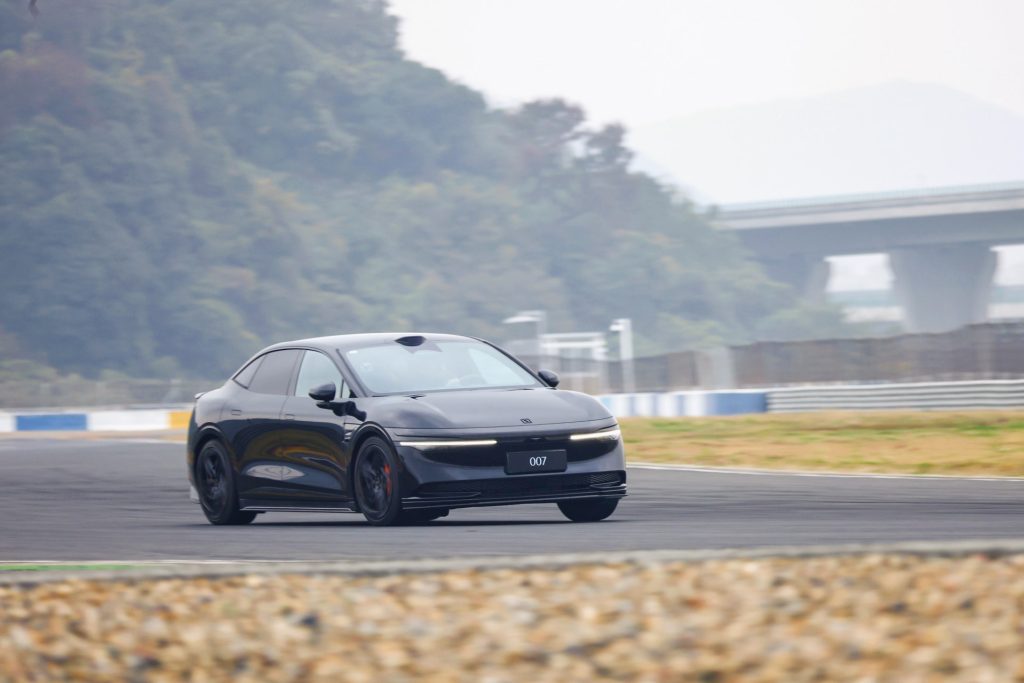
What will actually come?
First off the rank will be the X, a small SUV that shares much with the Volvo EX30 and Smart #1. In Australia, it is available in rear- and all-wheel-drive forms, with a starting price of around NZ$63,000. You get a lot for your money, including an impressive infotainment screen, heated and ventilated synthetic leather seats, a glass roof, and a digital app for opening and closing. The interior features touches like an image of a skyline lit up in the door trims and overall the finishes give a premium look; albeit more Gucci handbag than traditional luxury.
The battery is a 66kWh unit, good for 440km on the WLTP cycle, with rear-wheel drive models putting out 200kW and all-wheel drive models 315kW.
Around the same time, we should see the 009. You have probably seen this massive people mover before, as Volvo gets a version too, in the form of the EM90. At 5.2 metres long and weighing in at 2.9 tonnes, this big boy is a box of luxury on wheels, with a choice of six or seven seats. There’s also the option of the ‘Grand’, which features an entirely separated rear cabin for just two people in absolute luxury—with a 43-inch smart TV and more. If you think you need a Rolls-Royce Phantom, consider this instead. The Grand is not an option outside of China yet. We are likely to follow Australia with two versions: a standard seven-seater or a six-seater with ‘aviation’ seats (think private jet on the ground).
It gets a 116kWh battery with charging speeds up to 205kW, though Zeekr has demonstrated a new battery that will allow 10–80 per cent charging in just 11 minutes, and dual-motor all-wheel drive outputs of 450kW and 693Nm. Is a 4.5-second 0–100km/h people-mover what we really need? Probably not. But we’ll take it!
Australian pricing equates to NZ$150,000, which is a lot. Zeekr put me in the back of one for a three-hour trip to the airport, and as I lay back enjoying my massage, I realised that for the VIP market, it offers real value. I’d rather be here than in the back of a Mercedes EQE or BMW i5 for the money, with the i7 and EQS far more expensive.
Lastly, and while not confirmed, the 7X seems highly likely. While some have been quick to draw comparisons between this and the Model Y, I believe it’s more of a competitor to the Audi Q6 e-tron or even the Polestar range.
It shares the blacked-out, party-trick front light panel with the 007 and hints of the same design at the rear. Inside, it feels extra premium, with soft-touch materials everywhere, a 16-inch mini-LED screen, a 21-inch sound system, and even a built-in tablet and table for rear passengers.
The rear-wheel drive model puts out 310kW and the all-wheel drive 475kW, with the option of a 100kWh battery, or a 75kWh ‘Golden’ version that Zeekr says is extremely durable and capable of massive charging speeds.
The price? We don’t know yet, but Zeekr has indicated it may struggle to match that of the Tesla Model Y. Take that to mean a price starting with a 7.
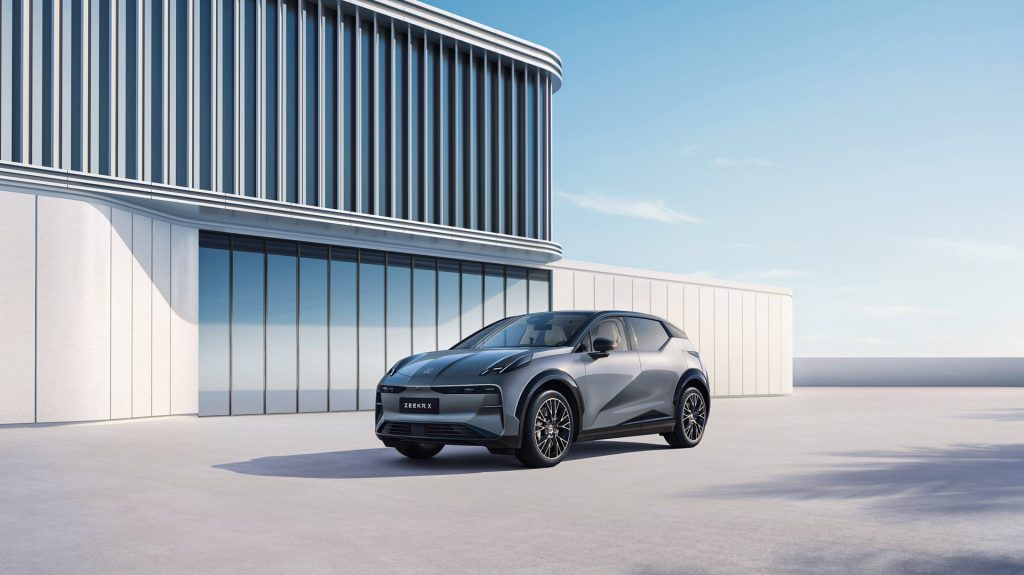
What about the Mix?
The car we checked out that we really want is one that may be a little trickier to bring to market. Remember how we mentioned earlier that Zeekr built a self-driving car for Waymo? Well, they repurposed it for a production vehicle in the form of the Mix. And it is crazy.
Shaped like, well, a box with a tiny nose, the Mix is all about interior space and convenience. It seats five in massive comfort, with seats able to move and adjust into a range of ‘scenes’. Having a picnic or a meeting? Face everyone towards the middle. Want to enjoy a view? Turn the passenger seat to face out the doors. There are touches like a sliding centre console with the option of a fridge, and the doors are lit by removable rechargeable lamps. Every concept idea they had, they seem to have executed.
The passenger side of the vehicle opens up entirely, with doors that slide forward and aft. On the driver’s side, the rear door slides, but the driver’s door is conventional. It is this lack of symmetry that likely makes it a tough right-hand drive proposition. Beyond moving the steering wheel and controls, the door re-engineering would be very, very expensive. It is rear-wheel drive only, with a single motor producing 310kW, paired with either a 76kWh or 102kWh battery. Its nearest competitor? Likely the Volkswagen ID. Buzz. The price? We don’t know, but based on its Chinese ask, expect at least NZ$75,000.
No longer cheap
If you still think Chinese cars are all about bargain-basement prices and basic features, Zeekr will force you to think again. These are sophisticated, powerful, and undeniably premium machines. Zeekr, while seemingly eager to undercut established brands, looks intent on playing with the premium players. And it appears to have a real chance of succeeding.
In terms of dimensions, it sits halfway between the Model 3 and Model S and could also tempt some who might be looking at the Porsche Taycan. It certainly looks at home in that company with its blacked-out light bar, sports coupé-like rear, optional Akebono brakes and the Nappa leather and massage seats inside.


